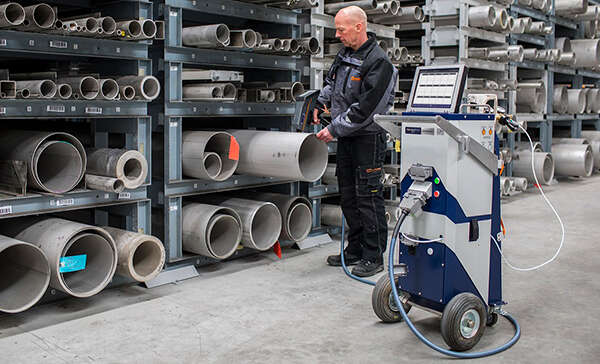We recently hosted a webinar on complementary analysis techniques for manufacturing process quality control. If you missed it, you can watch it here on-demand.
Our webinar provoked lots of great audience questions. So we’ve summarised the top questions and our experts’ answers here.

It depends what non-metallic material you’re trying to analyze. Here are a couple of examples:
Plastics. If the plastic has no additive or addition of any heavy elements (e.g. iron, titanium etc.) to mix with the signal, then yes it would be quite simple to test for metallic particulates using our handheld XRF X-MET8000.
Metallic dust or fragments from machinery production. We’ve had a couple of examples in food production where they are checking metallic fragments to check to see if the metal is from part of their production, or if it is a foreign body. Again, our X-MET8000 is used for this application.
It would depend on if the weaknesses are caused by a change/difference in the chemical composition of the weld material. XRF, LIBS and OES will purely tell you the chemical composition of what it analyses, so wouldn’t directly detect if there are any weaknesses.
However, these technologies could signal whether a difference in chemical composition could be the root cause of the issue, as the composition of the final weld will be a combination of all the alloys that have been melted together – the filler and the base materials. A difference in the chemical composition can be the cause of changes to the physical properties, like corrosion resistance, hardness, etc. and these technologies will help identify that.
Yes, our thermal analysis range make it easy to analyse the thermal behaviour of materials, whether in development or in the production stage.
Depending on what you’re trying to do, it’s possible to use material analyzers for counterfeit identification. We’ve actually written an article that explains this application in more detail blog post about it that you might be interested in reading that explains more about it: using XRF to spot counterfeits.
No, you don’t need radiation training for LIBS use. We provide 3B laser safety glasses to protect eyes and there may be some local regulations to follow but in most countries you’re good to go once you receive your analyzer. You can find more about the differences between XRF and LIBS here.
Yes, it can. Our Vulcan LIBS analyzer has a 1-second measurement time so it can do it really quickly as well.
Our XRF analyzers are designed to meet rigorous safety requirements, and XRF testing is safe as long as it’s done in accordance with manufacturer instructions. Our instruments come with safety features to protect the operator, such as the sample proximity sensor and a range of accessories to suit all sample shapes and sizes.
It depends on the material but probably. This is one of the reasons GT Factors, one of our UK based customers chose the Vulcan LIBS analyzer to verify material coming in.
It depends on what you’re looking to analyze and where in the process as to what’s the right approach. Check out our infographic on the different analyzer options within the quality control and assurance process for help but equally, this is what our experts are for, talk through your needs so together we can work out the right solution for you.
Our experts are always at hand to answer questions – get in touch below or request a 1:1 demo and we’ll be in touch with you.
Get in touchYou might also be interested in:
-Our solutions for metal manufacturing quality assurance and control
-Our solutions for the automotive industry
-Other on-demand webinars for metal manufacturing QA/QC